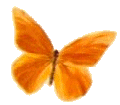The next step is to plan a design and chose an area in your yard that will provide adequate sunlight for the butterflies. A sunny location is needed since butterflies are cold- blooded and the sun is needed to warm their bodies on cool mornings. Flat stones also work well for sun bathing.
When choosing an area the best place is one that is well protected from the wind. If an area is well protected from wind, butterflies will congregate there on windy days.
When thinking of a garden design and deciding on what flowers to use another bit of information is what colors attract butterflies. Some say that a butterflies favorite color is purple, followed by blue, yellow, white, and pink. Butterflies are first attracted by color and the larger the planting of a specific color the easier it will for them to spot.
If you are planning to keep your butterflies around you must also keep in mind you need plantings of larval food. Caterpillars rarely do damage to plants. Plants appropriate for larval feeding are dill, parsley, legumes, mustard, clover, sunflower, and ruellia.
Butterflies have been known to be very "social" insects. By providing them a shallow dish with sand in the bottom and filled with water you may find males "puddling" there. During this, they absorb minerals and pass them along to the females during mating.
The last thing to remember
for butterfly gardening is not to use insecticides. Insecticides are deadly
for pests as well as for butterflies and larvae. Biological control and
organic ways of handling pest problems is an issue here. Predators can
be placed in your garden, such as the preying mantis, green lacewing, and
lady beetles.







Perennials for Butterfly Gardening
| Scientific Name | Common Name |
| Achilla | Yarrow |
| Asclepias tuberosa | Butterfly weed |
| Asclepias syriaca | Common milkweed |
| Aster frikatti | Frikarti aster |
| Baptisia spp. | False Indigo |
| Buddlea Davidii | Butterfly Bush |
| Ceanothus americanus | New Jersey Tea |
| Centranthus rubur | Jupiter's Beard |
| Chrysanthemum | C;hrysanthemum |
| Clethra alnilolia | Sweet Pepperbush |
| Coreopsis spp. | Coreopsis |
| Caucus carota | Queen Anne's Lace |
| Echinacea purpurea | Purple Coneflower |
| Echinops ritro | Globe Thistle |
| Eupatorium spp. | Joe Pye Weed |
| Gaillardia | Indian Blanket |
| Helianthus spp. | Sunflowers |
| Heliotropium arborescens | Heliotrope |
| Hemerocallis spp. | Day lilies |
| Impatiens spp. | Impatiens |
| Lantana spp. | Lantana |
| Lathyrus | Sweet Pea |
| Lavendula spp. | Lavender |
| Liatris spicata | Spike Gayfeathers |
| Lilium speciosum | Tiger lily |
| Lonicera spp. | Honeysuckle |
| Mentha spp. | Mint |
| Monarda didyma | Bee Balm |
| Phlox paniculata | Summer Phlox |
| Rosmarinus officinalis | Rosemary |
| Rudbeckia spp. | Black-eyed Susan |
| Ruta graveolens | Common Rue |
| Scabiosa caucasica | Pincushion Flower |
| Sedum spectabile | Autumn Joy Sedum |
| Solidago spp. | Goldenrod |
| Teucrium spp. | Germander |
| Thymus spp. | Thyme |
| Viola spp. | Violet |
Annuals
